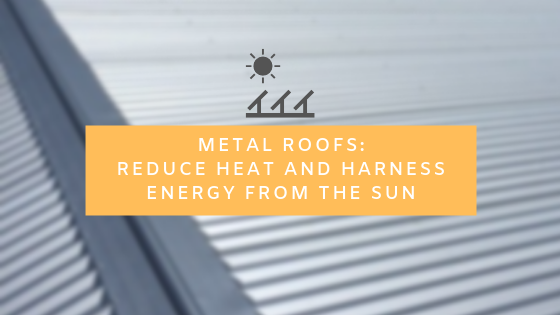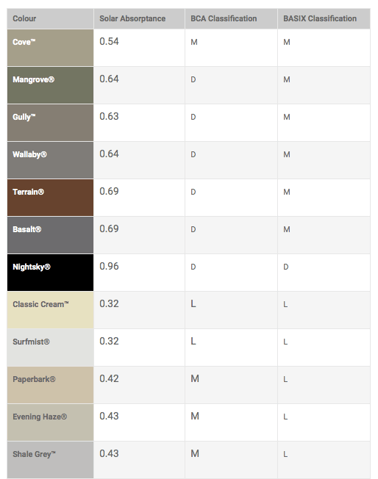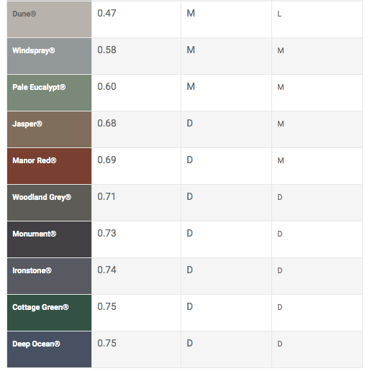
Metal roofs are commonplace in Australia for a number of reasons, not least being that they are known to be able to reduce your cooling bill, as well as provide the perfect canvas to harness solar energy.
Increase Thermal Efficiency
When installed as the external cladding component of your roof system, metal can increase the thermal efficiency of your home simply because of its reflective properties. Lighter colours are obviously better choices in this regard, and there are five colours in the COLORBOND® steel range that qualify as solar reflective - Surfmist®, Classic Cream®, Paper Bark®, Evening Haze® and Shale Grey®. According to their website:
“Every colour (except Night Sky®) in the standard COLORBOND® steel range features Thermatech® solar reflectance technology. Thermatech® technology is designed to reflect more of the sun's heat on hot days, which can mean less dependence on air-conditioning, plus reduced heat stress for your roof. This makes COLORBOND® steel a good choice for your home, your wallet and our planet.”
The table below outlines the solar absorbency classifications of each of their colours. Remember the lower the number, the lower the absorbency, or - the more light that colour reflects.


Another beneficial factor is that any heat that is absorbed by metal sheeting will dissipate a lot quicker than other roofing materials such as concrete or clay/terracotta tiles.
Easily Install Solar
Another of our benefits of metal roofing is that solar panels are typically easier to install on metal roofs than other types! Depending on where you live and whether there are nearby trees, buildings or landforms casting shadows, your roof is exposed to direct sunlight year round, making it the perfect place to install solar panels without taking up valuable space elsewhere on your property.

Something to consider...
Is your roof galvanised metal? If you answered yes, then there might be an issue with incompatible metals leading to corrosions of your roof. Rainfall facilitates the flow of electrons from one dissimilar metal to another, which is problematic because the brackets that fix solar panels to the roof are likely not to be galvanised. Rust will soon appear along the water course below and unfortunately, there’s no easy solution to this except to keep the two metals apart! If you’ve got an existing galvanised roof, it might be worth replacing it prior to the installation of the new solar panels to avoid the cost and inconvenience of having them removed and reinstalled down the track!
Government guides to solar
If you’re considering getting solar panels on your roof, check out the following guide to getting started:
Qld Government ‘Get started with Solar’ Guide
If you've already got solar panels and are looking for some guidance on how to maintain them, the QLD government has also produced a handy guide:
Qld Government ‘Solar Maintenance’ Guide
We hope you found this blog about metal roofs and solar energy useful. Please don't hesitate to give us a call and have a chat with one of our friendly roofing experts if you have any further questions!
1800 476 634
You can also request a complimentary roof inspection and quote by clicking this link:
Did you find the information in this blog useful? Please comment below!
Updated 7th Jan 2020 to provide most current information


